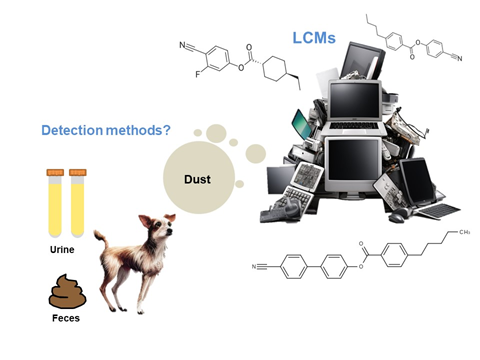Environmental Exposure to Liquid Crystal Monomers from Digital Displays
Published 17 March, 2024
Liquid crystal monomers (LCMs) are synthetic organic chemicals used in manufacturing liquid crystal displays (LCDs) present in numerous digital electronic devices. As the use of digital electronics, such as computers and smartphones, becomes increasingly prevalent, concerns over LCMs exposure have risen to prominence as a public health issue. However, research into the occurrence of LCMs in human and environmental matrices remain limited.
In a recent study published in the KeAi journal Environmental Chemistry and Ecotoxicology, a team of researchers from the Wadsworth Center, New York State Department of Health, and the Department of Environmental Health Sciences at SUNY Albany, developed an innovative technique to identify 60 different liquid crystal monomers (LCMs) in a variety of samples, including electronic waste, indoor dust, and even in dog feces and urine.
"Our approach, using gas chromatography–mass spectrometry (GC–MS), provides insight into the biological and environmental exposure to LCMs, chemicals frequently used in the production of liquid crystal displays,” explains Yuan Liu, the first author of the study. “Notably, we found the widespread presence of LCMs not only in electronic waste but also in dog feces and urine.” This is the first study to report the occurrence of LCMs in dog urine and feces.
The method's performance was evaluated based on accuracy, precision, sensitivity, and feasibility. It demonstrated satisfactory levels of precision and accuracy, with limits of detection deemed suitable for the analysis of LCMs in both environmental and biological samples.
"The versatility of this method enables the comprehensive monitoring of these chemicals across a wide range of matrices, offering a more detailed depiction of potential exposure risks," adds Kurunthachalam Kannan, senior and corresponding author of the study. “It enhances our understanding of the distribution of LCMs and introduces a novel approach to assess their impact on health and the environment.”

Caption: Innovative detection of LCMs across diverse environments. CREDIT: The AUTHORS.
Contact author name, affiliation, email address:
Dr. Kurunthachalam Kannan, Department of Environmental Health Sciences, Wadsworth Center, New York State Department of Health, kurunthachalam.kannan@health.ny.gov
Social media handles: If any of the authors have social media handles; for example, for Twitter or LinkedIn, please add them here.
Funder: The research reported here was supported, in part, by the National Institute of Environmental Health Sciences (NIEHS) under award number U2CES026542 (KK). The content is solely the responsibility of the authors and does not necessarily represent the official views of the NIEHS.
Conflict of interest: The authors declare that they have no known competing financial interests or personal relationships that could have appeared to influence the work reported in this paper. The author Kurunthachalam Kannan is the Editor-in-Chief for Environmental Chemistry and Ecotoxicology and was not involved in the editorial review or the decision to publish this article.
See the article: Liu, Y., Li, W., Li, Z., Kannan, K. A method for the determination of 60 liquid crystal monomers in biotic and abiotic samples, Environmental Chemistry and Ecotoxicology, Volume 6, 2024, Pages 51-64.

